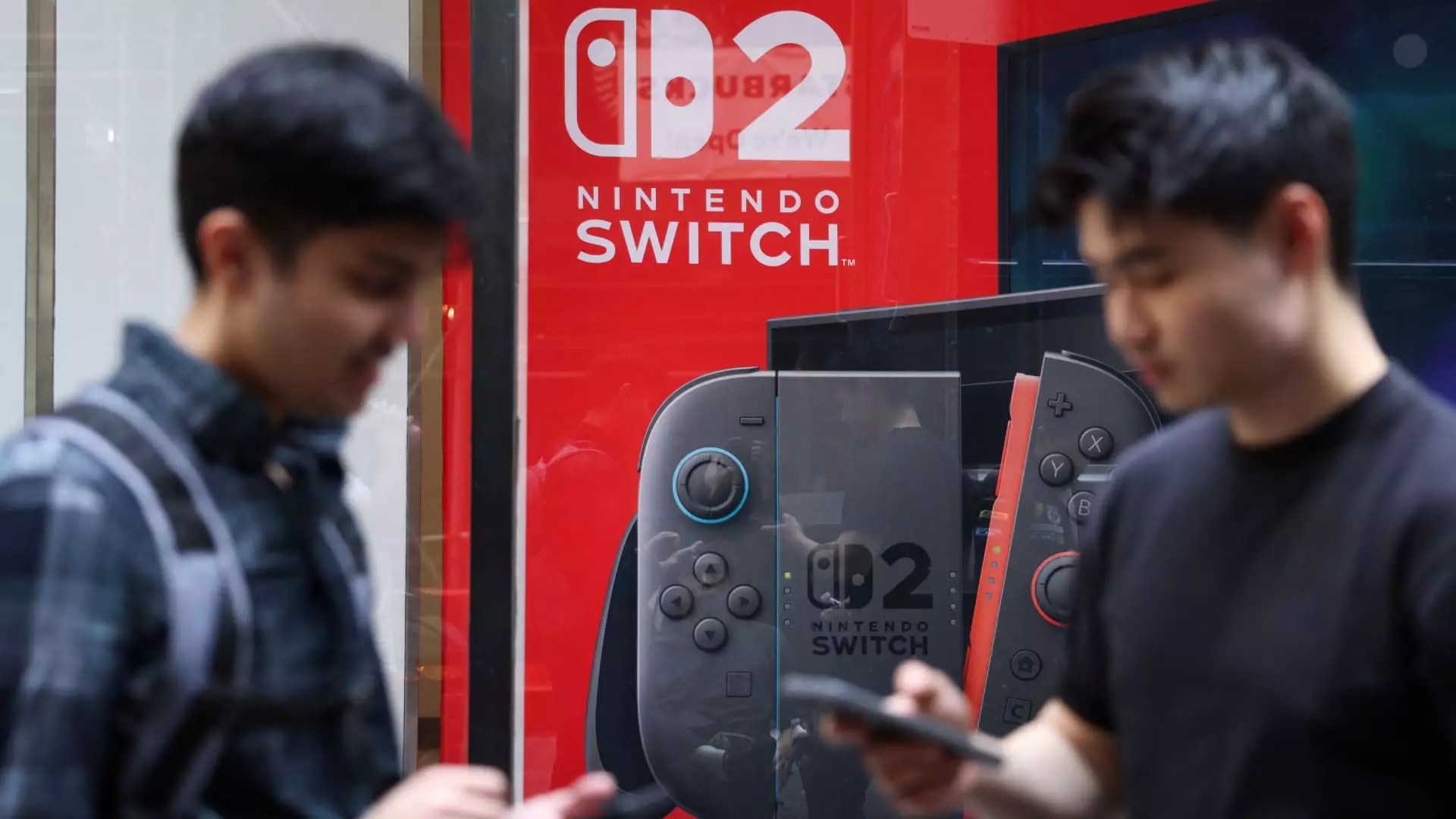When the Nintendo Switch 2 launched, it was not just another gaming console; it was a phenomenon, igniting waves of excitement among gamers and stock investors alike. With the original Switch skyrocketing to nearly 152 million units sold, expectations were astronomically high. But one has to wonder: is this frenzy for the Switch 2 a genuine revival of creativity in gaming, or are we simply witnessing a bandwagon of hype that’s bound to tank like so many predecessors?
Analysts and fans alike were eager for the Switch 2, and the signals were all there: exclusive extended store hours, significant shortages, and astronomical pre-order numbers. Shuntaro Furukawa, Nintendo’s president, shared a staggering statistic: 2.2 million eager participants in Japan alone entered a lottery for the chance to purchase the new console. If that’s not a sign of pent-up demand, I don’t know what is. However, looking closer, one might see the cracks in this hype-laden facade.
Mixed Signals: Innovation or Repetition?
At the heart of the excitement is the innovative design that originally defined the Switch. The hybrid nature—allowing players to seamlessly transition from a home console to a portable gaming beast—was revolutionary in 2017. However, by 2024, are we really seeing innovation, or is Nintendo banking on nostalgia? George Jijiashvili, a senior analyst at Omdia, boldly declared this to be the “biggest console launch of all time.” But let’s not forget, past console launches have often delivered over-promised experiences that dwindled after the immediate excitement wore off.
In essence, while the Switch 2’s design largely mimics its predecessor, the excitement surrounding it feels more like a revival of previous formulas than a leap into uncharted territories. Gaming deserves to evolve—not just replay the same chord. If Nintendo truly wants to capture gamers’ hearts and minds for the long haul, it must steer clear of complacency and actually innovate rather than lean into nostalgia.
Global Supply Dilemmas: A Tale of Two Markets
The hype has also translated into logistical hurdles. The initial launch saw stock shortages across various regions, with Japan experiencing an overwhelming demand that left casual gamers empty-handed. Serkan Toto’s insights reflect this tension well: “You cannot walk into a store anywhere in Japan to pick up a Switch 2 without a pre-order.” This echoes a troubling truth: Are we creating a false narrative that only amplifies our desire, subsequently turning consumers against a brand which traditionally prided itself on accessibility?
In stark contrast, reports of availability in the U.K. juxtapose the extreme shortages found in Japan and the U.S. This inconsistency raises questions about Nintendo’s production strategy. Is it a well-calculated move to manufacture urgency and hype, or simply an unfortunate miscalculation? As other gaming competitors ramp up their offerings, Nintendo must confront the risk of losing loyal consumers due to persistent stock issues that will only frustrate fans and potential buyers.
Sales Forecast: Realistic or Reckless?
Nintendo is projecting sales of 15 million units for the Switch 2 within the fiscal year ending in March 2026—numbers that some analysts call conservatively low. If the mantra of “more is better” holds true, shouldn’t Nintendo aim higher, especially with forecasts of potentially 20 million units from Kantan Games’ Toto? While meeting lofty sales goals is important, unrealistic projections could lead to disappointment, particularly if production issues persist.
Consumers are becoming savvier, demanding innovation and quality over sheer numbers. The gaming industry is evolving, and so are the expectations surrounding it. If Nintendo doesn’t reevaluate its sales forecast strategies and embrace a more customer-centric approach, it risks alienating its base and faltering like so many others in the past.
The Echoing Dilemma of Gaming Culture
The launch of the Switch 2 can be viewed as a microcosm of the larger gaming culture: one that craves novelty while simultaneously being tethered to nostalgia. The marketplace is flooded with possibilities, yet Nintendo seems to be walking a tightrope, teetering between creating a groundbreaking experience and retreading familiar ground.
At its core, the enjoyment derived from gaming should come from exploring new horizons—not merely reliving cherished memories. Nintendo has the potential for greatness but must recognize that consumers seek more than just a new console; they want a transformative experience that their beautifully crafted games can provide. In this increasingly competitive landscape, aspirations must transcend mere units sold to embrace a legacy of innovation that can withstand the test of time, lest we see another beloved brand lost to the iterative cycles of mediocrity.


Leave a Reply